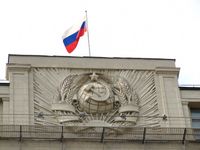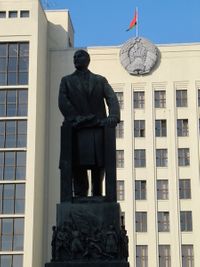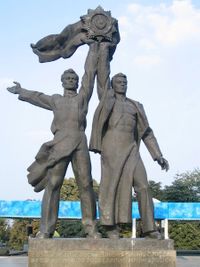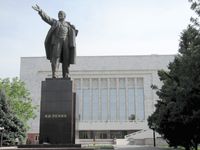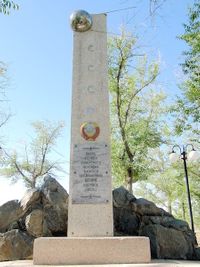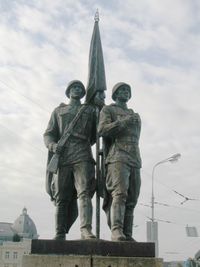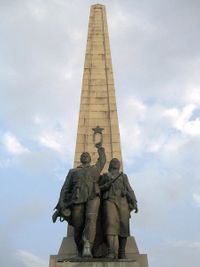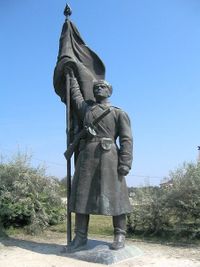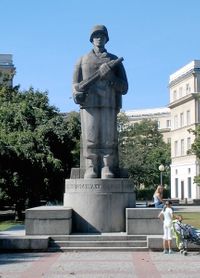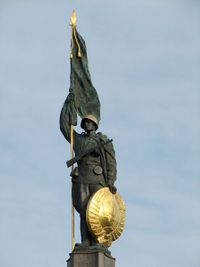Post-Soviet Space
Well, what or where is this place I call "Post-Soviet Space"?
Geographically I could simply stick to the continents and describe the countries I have been. It would also make it easier to "explain" and you do not have to justify anything because geography is fact.
The post-Soviet space (or states) is more a term used by political science and describing the area and/or countries released to independence after the break-up of the Union of Socialistic Soviet Republics 1991 and the Russian Federation being the official successor of the Union. In some way you could also extend this space to the former Eastern Block countries, which are nowadays described as Central European countries, or Middle East Europe, or also the Balkan region respectively South East Europe - there are some varieties possible.
But first I'll stick to the core countries of the USSR here. These 15 states share a (recent) history and identify them as post-Soviet states/space, but each handles it differently. Some removed most symbols more or less successfully and wiped it out as soon as possible. Others are struggling in doing so and/or need respectively take their time to cut those bonds and some few preserve or only slowly exchange them with symbols of the nowadays power and nation. In travelling in (some of) these countries I could see how hard they try to remove legacies - or not.
Whereever and whenever it ends, the following picture, showing bear Misha the mascot for the Olympic games 1980 in Moscow (a bit mean that they handed him the gun), describes it in a funny way. Shot in Prague this was a poster for a museum where legacies of the past were exhibited.
Now, almost 30 years after the dissolution of the Soviet Union, you can say that some countries in fact released themselves from the bonds, even though some "issues" stayed as the legacy stil have an impact. This applies to the Baltic countries, which still have a lot Russians living in this countries what causes some tensions.
Then there are the Central Asian republics with their quite different approach on the past. I only know two by now, Kazakhstan and Kirgistan. Whereas the first one got wealthy and successful and hence continues it's selfconfident way, my opinion regarding Kirgistan is that they struggle both, on one hand side in questions of economy and trying to overcome budgetary issues and on the other hand side I dare to say that the Soviet past was not the worst for them and therefore no need to replace the shared past.
And then there are the "core slavic countries" of the Union. Here it is quite diverse. In the Russian Federation, as successor of the USSR, the legacies can be found throughout the vast country. They follow a quite difficult and complicated way in preserving the past. But from a political point of view a (new/young) country cannot (only) rely on old symbols and past stories. They try to find their way in praising the past but also have to point on the fact that the nowadays country is also powerful and important. Belarus seems to be even more orientating on the past. Couple of years ago I would have agreed. But in living here I also realised that a process of "removing of the past" found its way. As I was studying Political Science this is not really surprising because as I said, after more than 25 years a young independet state cannot built its souvereignity on something what faded away, or to say it straight: lost (against the enemy of the system). In so far it is funny but not suprising that the first two pictures below symbolise the different approach: whereas the Russian Duma (parlament) still has (at the time I took the foto, don't know if it' still actual) still has the Soviet coat of arms, the parlament in Minsk (2nd foto) indeed boasts Lenin standing there but does NOT use the coat of arms of the Belarusian Socialist Soviet Republic any more, and I could hardly find any legacy coat of arms throughout the city (I can remember only one or two). Anyway, the Soviet past is also seen as a story of success and hence you still can find enough legacies. And the Ukraine...you know the story. This country struggled and still struggles most in how to deal with the past. In fact, now they force a policy to wipe out the Soviet legacy. Somehow understandable, on the other hand side deplorable because things like mosaics get lost due to the strict "decommunisation" policy.
And last but not least the "extended" post-Soviet space. Countries like Hungary, Poland, Romania etc. were strict in getting rid of this part of history. In Romania, I would say, there are hardly any signs left except the buildings, but this is no surprise taking the Ceausescu-regime into account. Similar to Poland and other Central Europan countries. And if not destroyed you can find legacies only in specific parks established for storing monuments there, like outside of Budapest. An exception is Bulgaria because, like in Kirgistan, the socialist time was also a time of increasing prosperity and hence a bit more difficult to delegitimise. However, most of the countries of the Eastern Block are part of another Union now, the European Union. And this also leads to an extinction of the past. At least regarding the symbols; because in other fields (like policy and/or how to deal with media etc.) you can see that still there seem a legacy effect how people govern or think respectively act.
Because these changes I decided to put these states but also the Baltic countries not to the post-Soviet space any more.
In my case, as long as differences are existing, I try to find and see them. Because sooner or later they disappear and get lost. See below some pictures symbolising the legacies showing the shared past which some want to get rid of or they do not feel they have to hurry in removing them.
